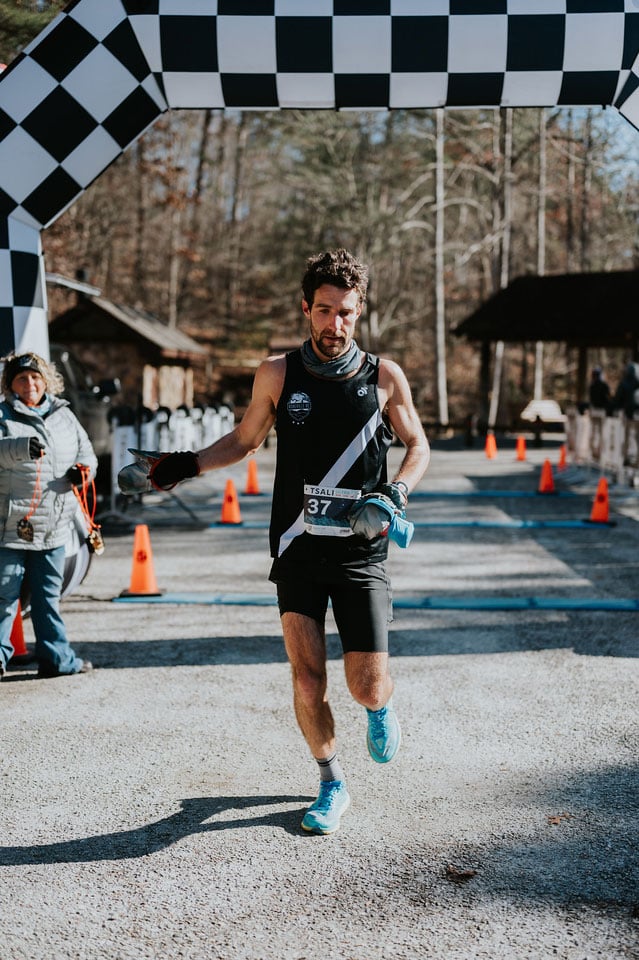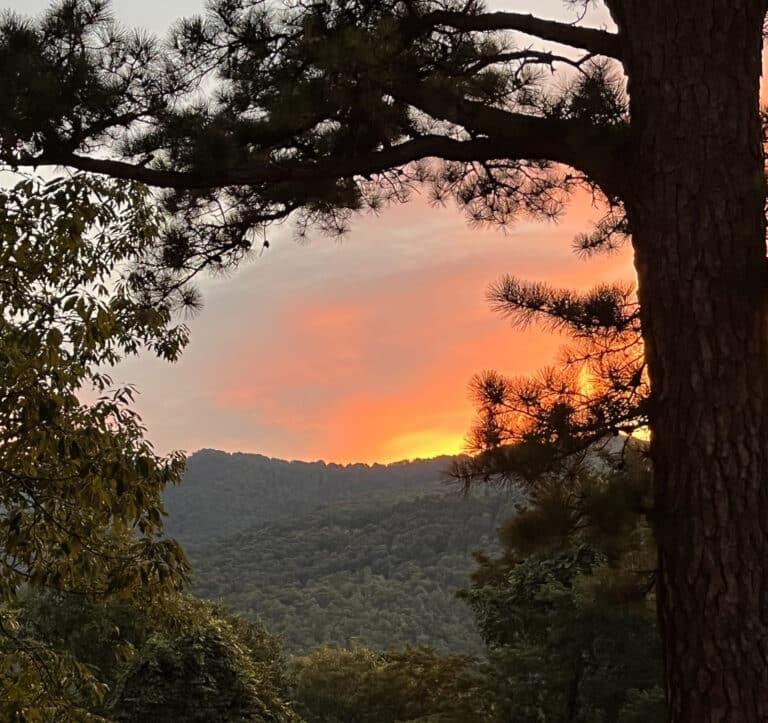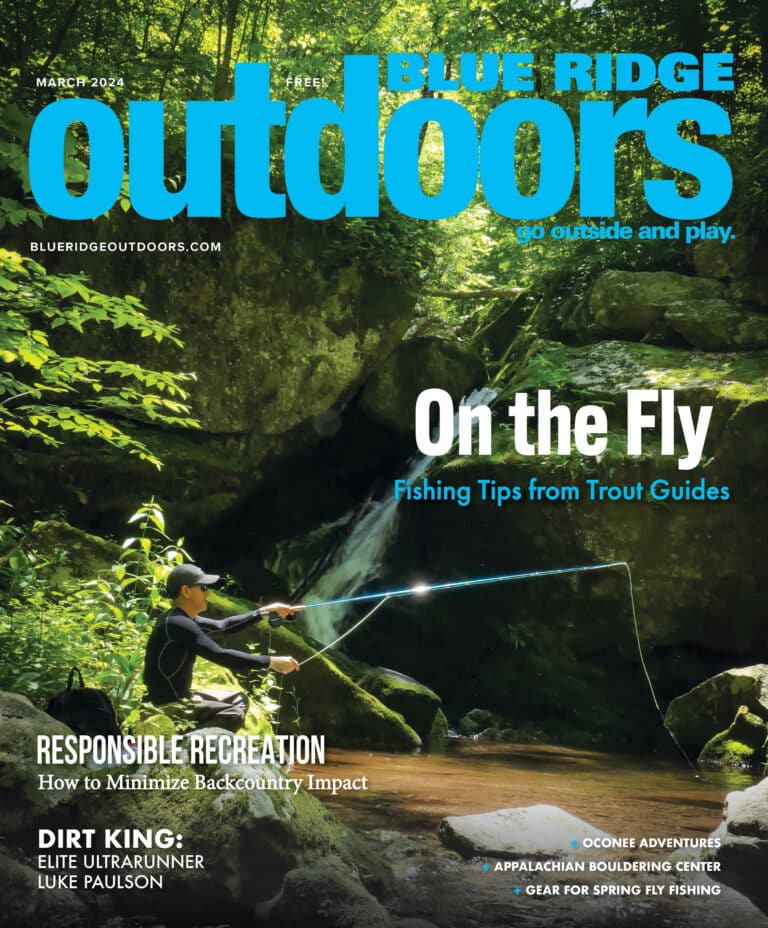What better way to celebrate Halloween than hiking deep into the forest…at night…to a cemetery?
Think about all of the things that have happened in the Southern Appalachians: Cherokee history, the frontiersmen history, the Revolutionary War, the Civil War. You also have two predominant cultures—Cherokee and the Scotch-Irish—with rich storytelling traditions.
It’s a recipe for ghost tales. And even if you don’t believe in ghosts, you’ve got to love the tale. We’ve found five spooky hikes that center around abandoned cemeteries and gravesites, each of which comes complete with its own ghost story. Hike to one of these cemeteries after dark and recount the legends of the area, and even non-believers will get a tingle up their spine.
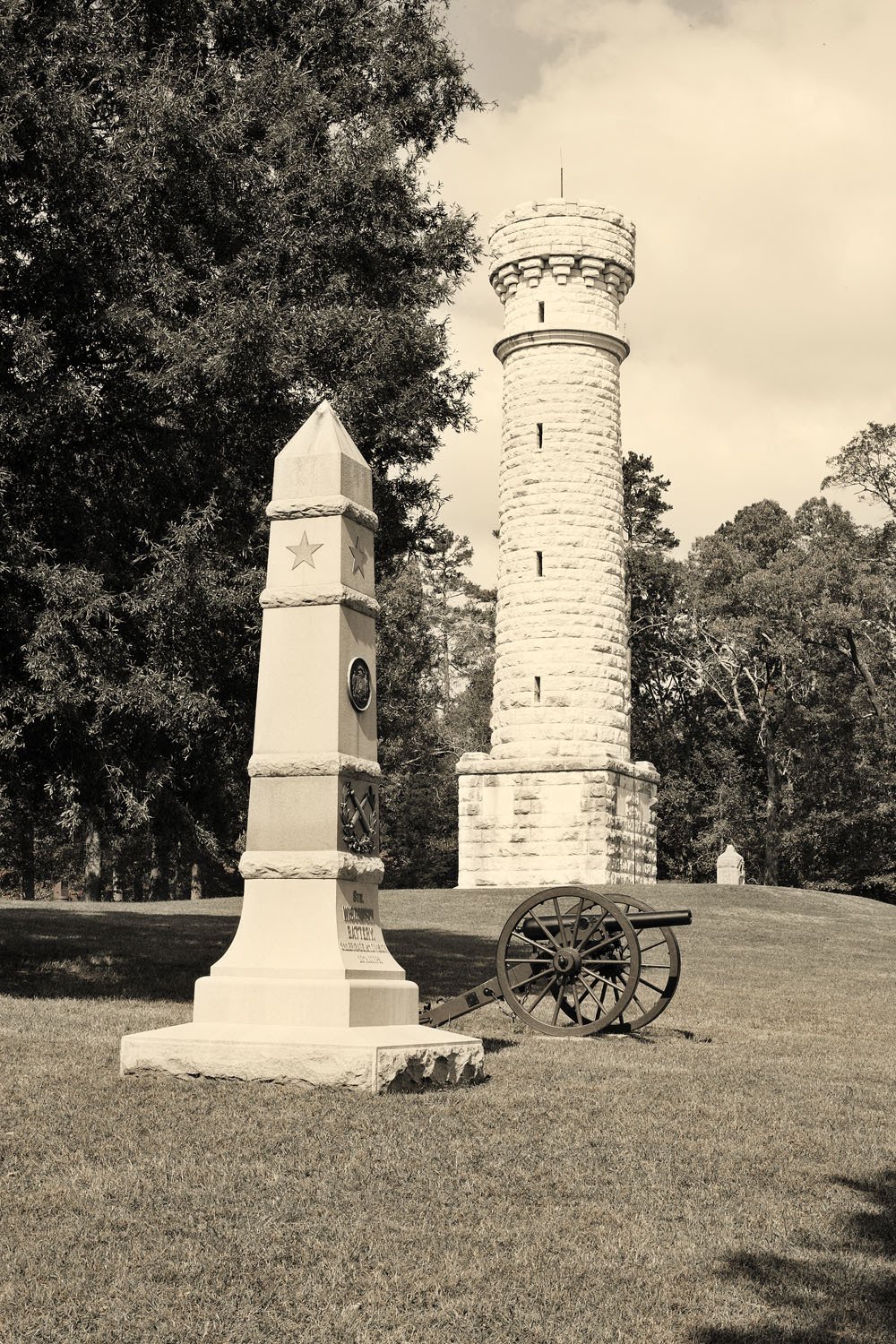
Sarver Hollow Shelter
Appalachian Trail, Va.
The Sarver Hollow Shelter is relatively new, built in 2002 by the Roanoke Appalachian Trail Club to fill in a 22-mile gap between resting spots for thru-hikers trekking between Roanoke and Blacksburg. But, like all good horror stories surrounding new construction, this shelter was built near the site of an old homestead that, according to legend, has been haunted for decades. Henry Sarver built his family a two-story cabin in the 1850s and his family scratched out a life from the rocky terrain for more than 70 years, living in the cabin from the Civil War to the Great Depression. A family cemetery near the home site shows that many of the Sarver children died young. One of the only gravestones that you can read belongs to Mary Sarver, who died in 1909 at the age of 9. It seems that after the Great Depression, the Sarvers abandoned their home in the mountains, leaving it essentially intact. For years before the shelter was built, thru-hikers would camp inside the dilapidated Sarver home. Sometime during the 90s, the roof collapsed on the home. Today, the cabin is completely in ruins, but you can still find the stone chimney and the family cemetery.
Hikers tell of a ghost that walks the woods after dark and often shakes campers awake in the middle of the night. Some say the ghost even shows up in photos they’ve taken of the home. Other hikers claim they’ve heard footsteps in the woods around the shelter. For whatever reason, hikers have named the ghost “George,” even though the Sarver patriarch’s name was Henry.
The Hike
It’s a 2.5-mile hike heading north from Va. 630 to the blue trail leading to the Sarver Cabin. Along the way, you’ll pass the Keffer Oak, a 300-year old live oak, the biggest on the Southern portion of the A.T. Along the ridge of Sinking Creek Mountain, you’ll also get to take in views of Sinking Creek Valley and Craig Creek Valley. It’s a steep drop from the ridge down to the homestead and shelter. The Sarver home site is downslope from the shelter. From there, scope the woods and small fields for the cemetery. If you’ve got the guts, spend the night at the shelter and wait for George to visit.
Norton Creek Trail
Great Smoky Mountains, N.C.
Great Smoky Mountains National Park probably has more ghost stories per square mile than any other park in the country. The Cherokee living in the area used to scare their children with the Spearfinger legend. Spearfinger was an old witch who lived on the highest ridges of the Smokies. She had one long finger made of stone as sharp as a knife. Spearfinger would troll the trails of the mountains disguised as an elderly grandmother in order to lure children who wandered too far from their village. She would sing and rock the child to sleep, then use her stone finger to cut out their livers, which she considered a delicacy.
A more modern ghost story involves an old settler who was killed while looking for his lost daughter in the woods. This happened near one of the small communities that existed on what is now the north shore of Lake Fontana. Today, hikers lost along the trails that traverse the area north of Lake Fontana tell stories of encountering a light that leads them to safety.
There are dozens of former homesites and more than 200 cemeteries inside the park, the greatest concentration of which are along the north shore of Lake Fontana. The combination of stone ruins and pocket cemeteries deep in the woods is enough to spook even the most logically-minded hiker.
The Hike
A quick two-mile jaunt into the woods to visit a cemetery at night is bold, but do you have the cojones to spend the night in the woods at a campsite just a stone’s throw from a spooky cemetery? If you answered yes to this question, here’s your chance to prove it. Hike the Norton Creek Trail starting on Lakeview Drive on the North Shore of Lake Fontana for six miles upstream to the Upper and Lower Norton Cemeteries. The trail is an old road bed that’s still used during “Decoration Days,” when the family of those buried in the plots converge to celebrate their ancestry and decorate the graves. Along your hike, you’ll pass a number of historic areas with ruins like chimneys, stone walls, and crumbling foundations. You’ll also be able to pitch your tent in the thick of this once-vibrant community at a number of different official backcountry campsites.
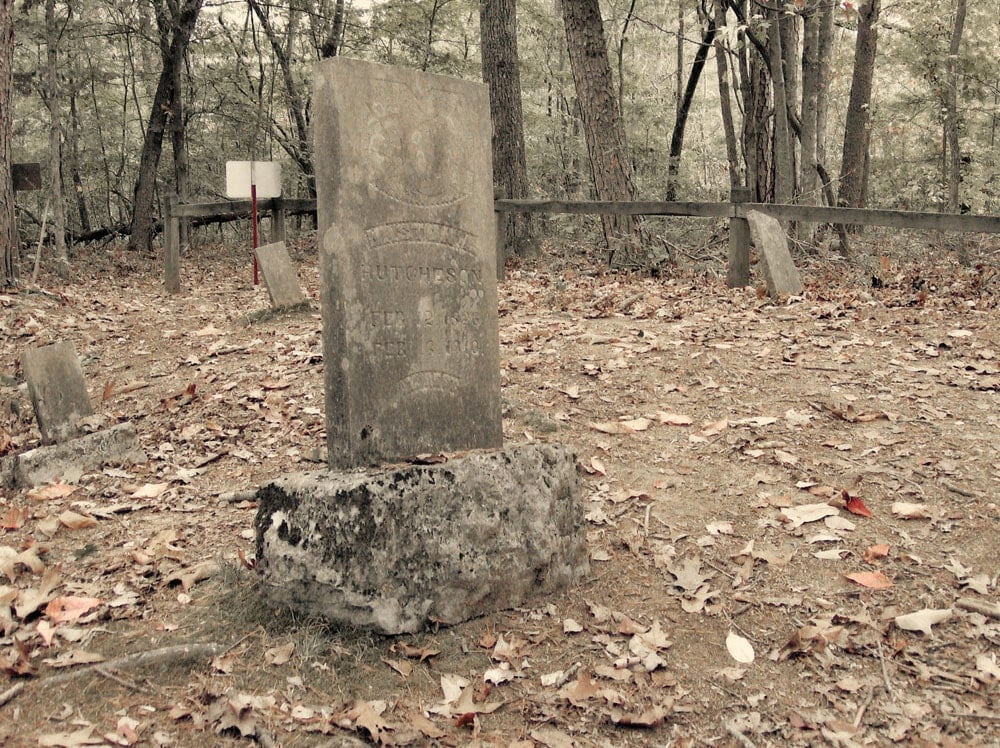
Ghost House Trail
Big Ridge State Park, Tenn.
This stretch of forest was part of the first western frontier, as wild and lawless a place as you could find in the young U.S. Today, a plaque marks Indian Rock, where the settler Peter Graves was scalped by Native Americans. Deeper in the park, a young witch was supposedly hung by her father. Even the ruins of the gristmill are supposedly haunted.
But the most pervasive ghost stories surround the Hutchinson family and their home, the ruins of which can still be found deep inside the park. During the late 1800s, the Hutchinson daughter, Mary, was struck with tuberculosis. Visitors were walking the trail to the Hutchinson home to visit the sick girl when they heard a dog running toward them. They lifted their lanterns, but saw no dog. When they reached the Hutchinson home, the visitors learned the girl had died at the exact same time they were approached by the phantom dog. The Hutchinson house itself was supposedly haunted even before young Mary passed away. According to local lore, there was so much ghost activity in and around that home that neighbors started fleeing the area even before the Tennessee Valley Authority Act condemned the land.
Today, Tennessee operates a 3,687-acre park on the heavily forested land that rests against the southern shore of the Norris Reservoir, roughly 25 miles north of Knoxville. Fifteen miles of hiking trails traverse the hills and valleys, most of which are reportedly haunted. Hikers say the ghost of Maston Hutchinson (Mary’s father) visits campers who hike to his grave and even shows up in pictures taken at the Norton Cemetery, his final resting place. Other hikers still encounter the phantom dog which is somehow linked to Mary Hutchinson’s death and afterlife.
The Hike
Walk the 1.2-mile Ghost House Trail, which forms a loop that travels past the Norton Cemetery and Hutchinson home ruins. Hike at night and listen for the panting of the phantom dog or the hooves of Hutchinson’s horse.
Too scared to go alone? Big Ridge State Park offers guided night hikes of the Ghost House Trail throughout the month of October. You’ll visit all the ghostly hotspots while rangers regale you with local history and ghoulish tales.
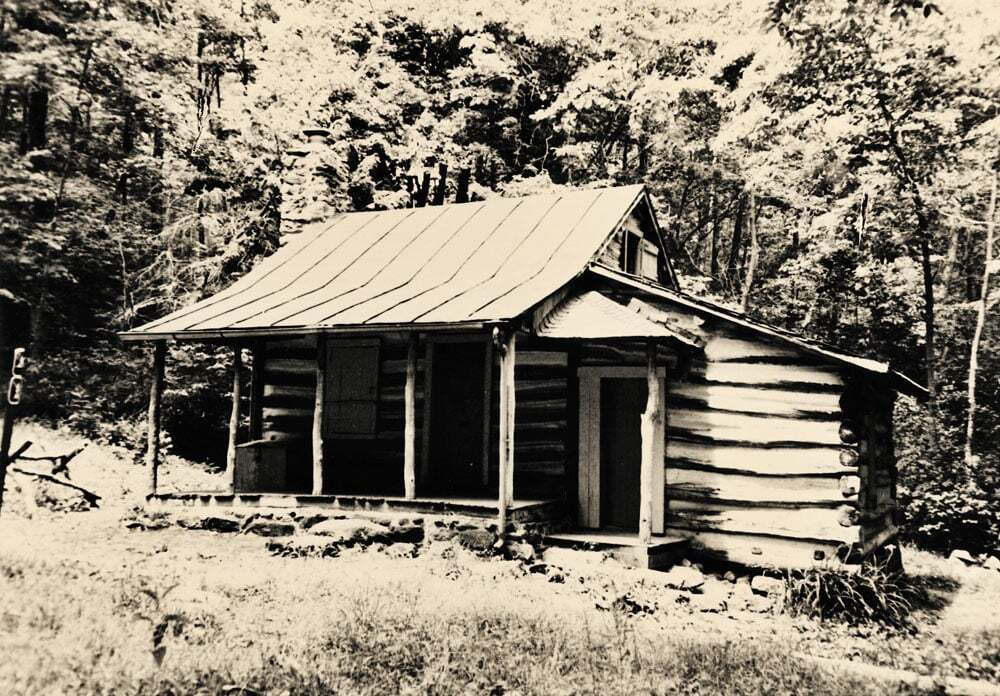
Corbin Cabin
Shenandoah National Park, V.A.
Before Shenandoah National Park was established in 1935, hundreds of families lived in the isolated hollows, farming the land and raising families in the remote mountains. After the park was established, the residents were moved elsewhere and most of the homesites were burned. For whatever reason, Corbin Cabin was spared and eventually was refurbished by the Potomac Appalachian Trail Club (PATC). The small home was constructed in the early 1900s by George T. Corbin. His wife, Nee Corbin, died in the cabin giving birth to their third child in 1924. It was a winter day when George had to bury his wife in the family cemetery near the cabin, then walk four miles to the nearest store to buy milk for his newborn baby.
Today, the Corbin Cabin is one of a handful of structures that the PATC rents to hikers within the park. It’s the only PATC cabin that’s on the National Register of Historic Places, and as far as we can tell, it’s the only PATC cabin that’s haunted by a ghost. Hikers say the ghost of Nee Corbin still resides in the sparse cabin, walking on the hard plank floors and wandering the woods near her old home.
The Hike
The Corbin Cabin sits in Shenandoah’s Central District. The easiest way to reach the cabin is by taking the Corbin Cabin Cutoff Trail (formerly the Free State Trail), which drops off Skyline Drive at milepost 37.9. It’s a steep, 1.5-mile descent to the cabin. You can do this as an out and back (save some legs for the 1,000-foot climb back to Skyline) or turn it into a five-mile loop by hooking up with the Nicholson Hollow Trail and a piece of the A.T. that parallels the drive back to your car. If you want to spend the night in the cabin, plan ahead. There’s usually a six-month waiting period for PATC cabins within the park. Once you reach the cabin, search the surrounding area for the grave of Nee Corbin. More than 100 cemeteries are still located within the park, but the Corbin family plot can be difficult to find.
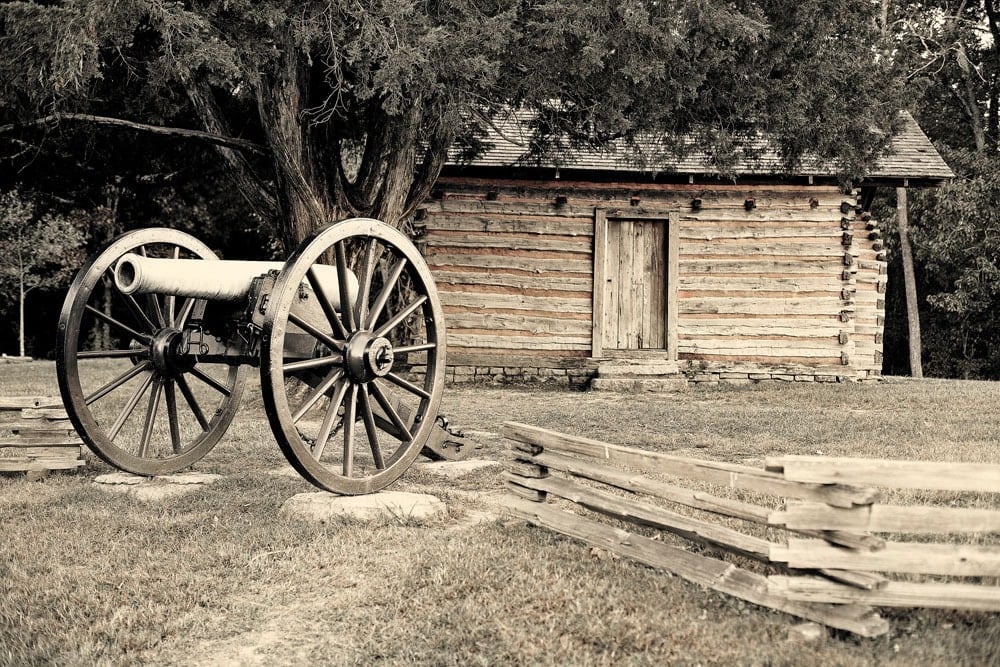
South Mountain Battlefield
Smith Mountain State Park, M.D.
The Battle for South Mountain may not have been the bloodiest, or even the most important battle of the Civil War, but it did give birth to one of the spookiest legends from the War Between the States. Daniel Wise lived with his two children in a small cabin near Fox’s Gap, one of the focal points of the Battle for South Mountain. The Wise family fled the cabin for a nearby church during the battle, and his home was used as an impromptu hospital. When the Wise family returned home several days after the battle, their fields were littered with Confederate and Union graves. Legend has it that the Union Army paid Daniel $5 per soldier to bury the dead from the battle. In order to save time, Daniel dumped 58 Confederate soldiers down a nearby well. Supposedly, Wise was haunted by the ghosts of those men until he gave their bodies a proper burial. To this day, if you walk the battlefield at night, it’s said that you can still hear the thud of bodies being thrown into the well. Some hikers say you can even see apparitions of soldiers walking the battlefield at night.
In actuality, it was the Union soldiers—not Wise—who dumped the 58 Confederate bodies into Wise’s well. The dead Confederates remained in the well for twelve years before being re-interred at the Confederate Cemetery in Hagerstown, Md.
The Hike
The Appalachian Trail runs along the ridge of South Mountain for 40 miles; it’s the only place along the entire trail corridor where the A.T. passes through a major Civil War battlefield. You don’t have to log 40 miles to take in the history, though. A seven-mile hike from Crampton Gap in Gathland State Park to the original Washington Monument passes through three gaps that played a pivotal role in the battle. Along the way, you’ll see beech trees that still bear the hand-carved graffiti of Civil War soldiers. Hike it at night and listen for the cannon fire and screams of Civil War ghosts.
Updated from original publish date Oct 1, 2010
Cover Photo: Corbin Cabin is said to be haunted by a woman who died while giving birth in 1924. Today the Potomac Appalachian Trail Club rents the cabin to visitors in Shenandoah National Park.
